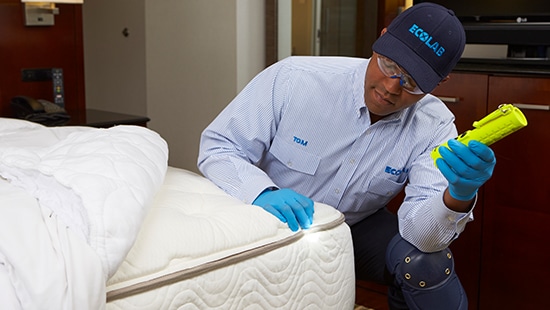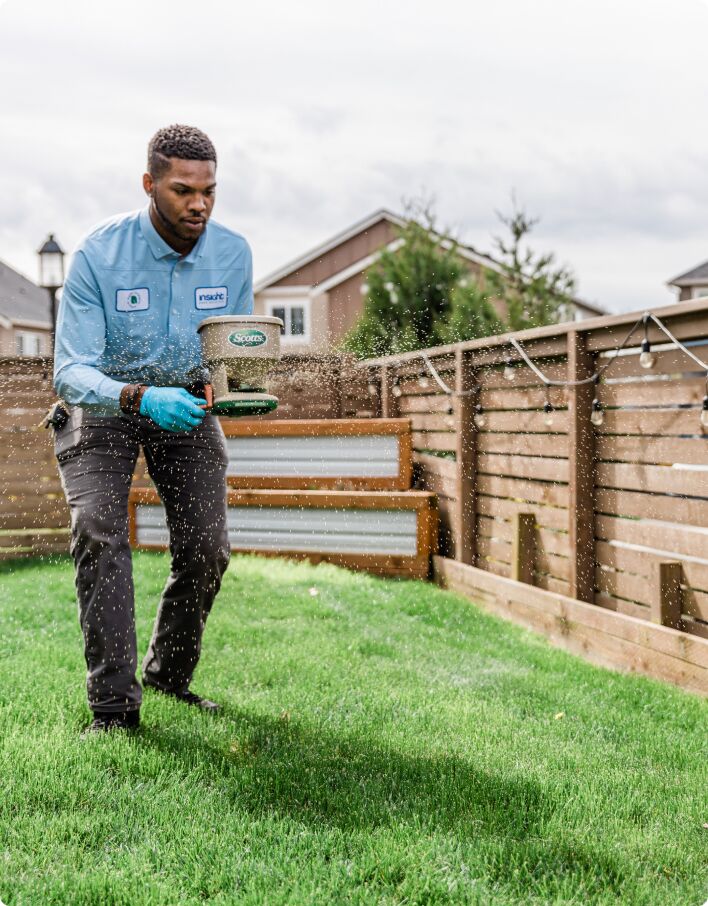Orem Pest Control Providers: Customized Solutions for each Invasion
Wiki Article
Finding the Different Types of Pest Control Techniques and Their Applications
Pest control is a vital facet of keeping a safe and healthy and balanced setting, whether it be in household, industrial, or farming settings. From chemical methods that target details insects to organic methods that harness all-natural predators, the world of pest control is varied and vast.Chemical Bug Control Methods
Chemical bug control strategies are widely made use of in farming and parasite administration to properly remove or manage pest invasions. These approaches entail making use of chemical compounds, such as herbicides, insecticides, and chemicals, to reduce or get rid of bug populations that pose a risk to crops, livestock, or human wellness. Pesticides, for instance, target particular bugs like weeds, rats, or insects, disrupting their life cycles or triggering direct damage upon get in touch with. Herbicides are particularly made to regulate undesirable plant life that takes on crops for resources and nutrients. Insecticides, on the various other hand, are used to fight insect bugs that can damage crops and transmit conditions.While chemical pest control methods can be very reliable in handling parasite populaces, they also increase worries concerning possible environmental and health and wellness threats. It is important to comply with safety and security standards, utilize incorporated pest monitoring methods, and think about different approaches to lessen the adverse impacts of chemical insect control methods.
Biological Bug Control Approaches
 Biological pest control methods make use of living organisms to minimize and handle insect populations in a sustainable and ecologically friendly way. This method entails introducing all-natural predators, parasites, or pathogens to regulate insects without the demand for synthetic chemicals. One typical method is the launch of ladybugs to deal with aphids in gardens, as ladybugs are all-natural killers of these harmful pests. Another instance is the use of Bacillus thuringiensis (Bt), a bacterium that generates toxic substances deadly to specific insect larvae, to control insects and caterpillars.
Biological pest control methods make use of living organisms to minimize and handle insect populations in a sustainable and ecologically friendly way. This method entails introducing all-natural predators, parasites, or pathogens to regulate insects without the demand for synthetic chemicals. One typical method is the launch of ladybugs to deal with aphids in gardens, as ladybugs are all-natural killers of these harmful pests. Another instance is the use of Bacillus thuringiensis (Bt), a bacterium that generates toxic substances deadly to specific insect larvae, to control insects and caterpillars. 
Biological bug control methods provide a number of benefits over chemical approaches. They are normally much safer for the setting, as they do not leave damaging deposits or add to air pollution. Additionally, these approaches are frequently a lot more targeted, influencing just the pest species without hurting various other microorganisms or valuable insects. Biological control can be a long-term service, as the introduced organisms can establish lasting populaces and give ongoing insect management. Generally, organic pest control methods offer a natural and reliable option to standard chemical treatments, promoting a well balanced ecosystem and much healthier settings.
Physical Bug Control Approaches
Making use of physical approaches to regulate pests involves the use of non-chemical or mechanical means to official website mitigate and handle bug problems efficiently. One usual physical parasite control approach is the installation of nets, screens, or fences to block bugs from getting in specific areas.Another physical method is making use of catches, such as snap traps for rodents or pheromone traps for bugs. These traps objective to catch bugs without presenting any kind of threat to human beings or investigate this site the environment. Additionally, physical control techniques can include methods like handpicking bugs off plants, utilizing vacuum cleaner tools to get rid of pests, or using warmth treatments to eliminate bed pests and other bugs in ravaged locations.
Integrated Bug Administration Strategies
Executing an alternative technique to pest monitoring, Integrated Bug Monitoring (IPM) methods intend to incorporate different reliable techniques to control and prevent bug infestations while reducing environmental impact and making certain lasting insect control methods. IPM entails the integration of multiple control approaches such as biological control, social techniques, mechanical control, and the cautious use of pesticides.

Moreover, IPM stresses the significance of surveillance and assessing pest populations to establish the most proper control strategies. By carrying out IPM techniques, insect control initiatives come to be more targeted and reliable, decreasing the threats related to extreme chemical use and advertising long-term parasite administration solutions.
Natural and Organic Bug Control Options

One prominent natural bug control approach is neem oil, stemmed from the seeds of the neem tree, which serves as a repellent and disrupts the growth and advancement of bugs. Diatomaceous planet, a natural silica-based powder, is an additional efficient natural bug control alternative that functions by drying out bugs upon contact. By incorporating natural and natural bug control alternatives into insect monitoring methods, people can efficiently regulate parasites while reducing damage to the setting and promoting lasting practices.
Conclusion
Finally, numerous parasite control techniques such as chemical, biological, physical, integrated insect administration, and natural choices are readily available for effectively managing bug invasions. Each technique has its very own benefits and applications relying on the sort of parasite and the setting. By understanding the different kinds of insect control methods and their applications, individuals can make educated decisions on the most ideal strategy to regulate parasites and shield their residential property.Chemical bug control methods are extensively used in farming and parasite monitoring to properly remove or manage pest invasions - Orem Pest Control. All-natural bug control techniques include using biological control representatives, such as killers or parasites, to manage parasite populaces. By integrating natural and natural pest control alternatives right into insect management strategies, people can properly control insects while decreasing injury to the atmosphere and advertising lasting techniques
In final thought, various parasite control methods such as chemical, biological, physical, incorporated insect administration, and natural alternatives are offered for efficiently taking care of insect infestations. By comprehending the different kinds of insect control strategies and their applications, individuals can make enlightened decisions on the most ideal method to control bugs and safeguard their residential or commercial property.
Report this wiki page